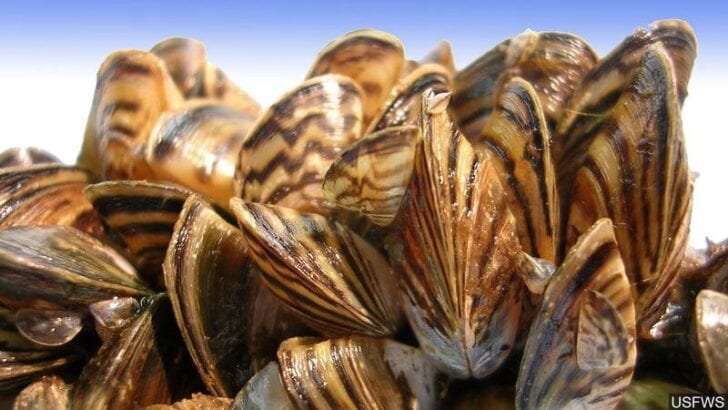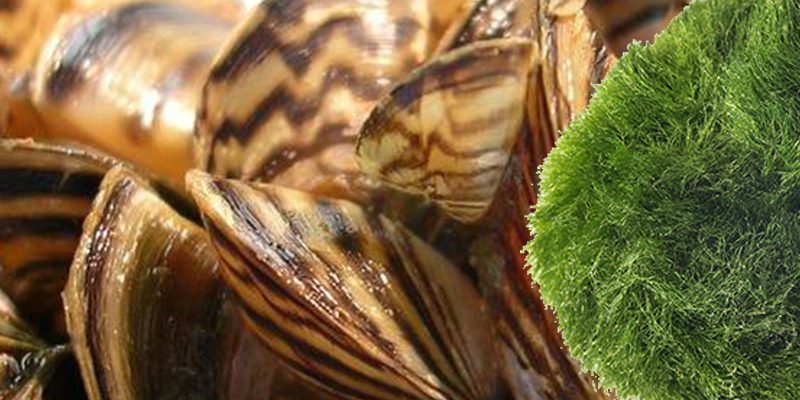TOMS RIVER, NJ – It’s one of the most invasive species and it might have just hitched a ride into your aquarium or pond during your last purchase at Petco and PetSmart.
Today, the NJ Division of Fish and Wildlife is joining fish and wildlife agencies nationwide to alert consumers about aquarium products that may be infested with invasive Zebra Mussels that have been found in “moss balls,” an aquarium plant product sold at aquarium and pet supply stores. Zebra mussels are regarded as one of the most destructive invasive species in North America.
“Zebra mussels can quickly take over once they get established in a waterbody and cause significant damage including disrupting the food chain, changing the chemistry of the water, clogging water intake and delivery systems and damaging boats,” the NJDEP said in a statement today.

Several major pet product retailers, including Petco and PetSmart, have proactively removed these products from their shelves.
The US Fish and Wildlife Service has issued the following information for those who may be affected:
Invasive zebra mussels have been found in “moss balls,” an aquarium plant product sold at aquarium and pet supply stores. Zebra mussels are regarded as one of the most destructive invasive species in North America.
Zebra mussels can quickly take over once they get established in a waterbody and cause significant damage including disrupting the food chain, changing the chemistry of the water (which can cause more blue green algae outbreaks or offensive taste), and clogging water intake and delivery systems. The concern is that live mussels released into a storm drain or flushed could be introduced into a waterway.

What are “moss balls?”
A moss ball is a species of green algae that is formed into a ball and is 2 to 5 inches in diameter. Moss balls are purchased for home aquariums are found in pet stores nationwide.
What should I do if I recently purchased moss balls for my aquarium?
DESTROY, DISPOSE, DRAIN
Do not dispose of the moss balls in drains, waterways, or gardens. Moss balls must be destroyed and disposed of in a sealed container in the trash.
When following any of the methods listed below, ensure that the disposal method you choose is in compliance with your local state laws and animal welfare regulations.
DESTROY in one of three ways:
- Freeze – Place the moss ball into a sealable plastic bag and freeze for at least 24 hours.
- Boil – Place the moss ball in boiling water for at least 1 full minute.
- Bleach / Vinegar – Submerge the moss ball in chlorine bleach or undiluted white vinegar for 20 minutes.
DISPOSE of the moss ball and any of its packaging in a sealed plastic bag in the trash. If vinegar, boiling water, or bleach was used, the liquid can be disposed down a household drain —never down a storm drain where it could enter and damage local waterways.
DRAIN and clean the aquarium.
Collect any fish or other living organisms and place them in another container, with water from a separate, uncontaminated water source. Sterilize the contaminated aquarium water by adding ¼ teaspoon bleach for each gallon of water. Let the water sit for 10 minutes and then dispose the sterilized water down a household drain.
Clean the aquarium and accessories using one of the following methods, ensuring that the decontaminate method you choose is in accordance with manufacturers’ recommendations:
- Hot Water Method:
- Use water that is 140 degrees F to flush and coat the tank and all accessory surfaces for at least one minute, OR
- Disinfection Method:
-
Submerge the moss ball in 1 cup of chlorine bleach per gallon of water for 10 minutes or undiluted white vinegar for 20 minutes.
- Soak the aquarium, substrate, rocks, décor, and filter media in the bleach water solution for 10 minutes.
- Rinse off all items prior to setting up the aquarium.
- Dispose of the previously used filter media and replace with new media.
- Use a dechlorinating product to neutralize any residual chlorine prior to reintroducing aquatic life.
-
It is recommended that you do another water change within a week and continue to monitor the tank for any unusual or unexpected aquatic life.
A more detailed list of DESTROY, DISPOSE, DRAIN instructions can be found here.
